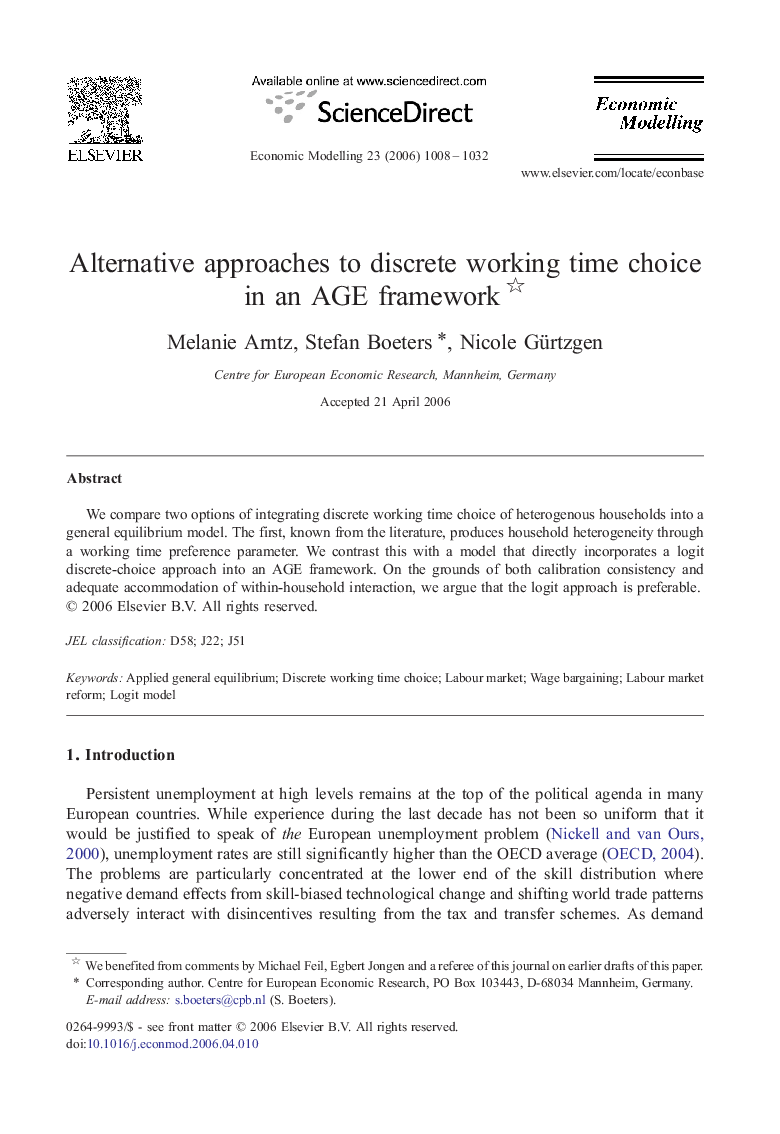| Article ID | Journal | Published Year | Pages | File Type |
|---|---|---|---|---|
| 5056144 | Economic Modelling | 2006 | 25 Pages |
Abstract
We compare two options of integrating discrete working time choice of heterogenous households into a general equilibrium model. The first, known from the literature, produces household heterogeneity through a working time preference parameter. We contrast this with a model that directly incorporates a logit discrete-choice approach into an AGE framework. On the grounds of both calibration consistency and adequate accommodation of within-household interaction, we argue that the logit approach is preferable.
Related Topics
Social Sciences and Humanities
Economics, Econometrics and Finance
Economics and Econometrics
Authors
Melanie Arntz, Stefan Boeters, Nicole Gürtzgen,
